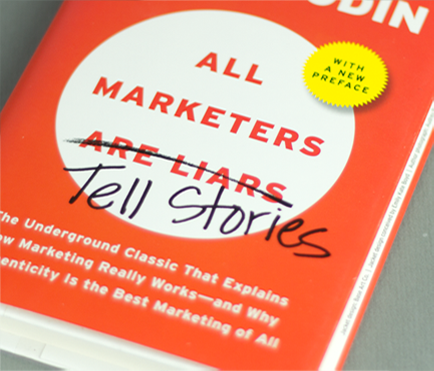Unlock the Power of Storytelling in Marketing: Measure Impact and Drive Revenue!
Javier Callejas
9/5/20232 min read


“IN A WORLD where consumers are bombarded with information”…(it definitely sounded a lot better in those 90’s movies) storytelling has emerged as a powerful tool for marketers to capture the hearts and minds of millions of people. But how do we turn that art of storytelling and make it quantifiable and connect it to concrete monetary goals? As Seth Godin wrote in his book All Marketers are Liars, “Marketers aren’t really liars. They are just storytellers.” But how do you capitalize on that storytelling?
First, we’ve got to focus on the Metrics that Matter!
Engagement Metrics: Track the engagement levels of your storytelling content. Metrics like likes, shares, comments, and click-through rates (CTR) can indicate the resonance of your stories with your audience. If a story sticks, engagement will reflect that thought and if not….belly flop!
Conversion Rates: Measure how storytelling impacts conversion rates. Analyze how storytelling-driven content contributes to lead generation and conversion into paying customers. At the end of the day, the stories must convert into monetary value, no matter how attached we may be to those stories.
Customer Lifetime Value (CLV): Assess how storytelling influences customer loyalty and retention. A well-crafted narrative can turn a one-time buyer into a lifelong advocate. Just look at Walt Disney: they created stories that truly connected with our hearts and senses and, in doing so, made lifelong fans that will go above and beyond to engage with their content.
Content Performance: Dive deep into the content analytics and identify which stories perform best and replicate their elements in future campaigns. Once again, Walt Disney does an excellent job of this in their content. They see what stories are working and find a way to replicate that same success while giving a different story. We, as marketers, must do the same.
Once the metrics are set, we Connect Those Stories to Monetary Goals!
Attribution Models: Use attribution modeling to trace the customer journey from exposure to storytelling content to the final sale. Understand which touch-points contribute most to revenue.
A/B Testing: Experiment with different storytelling approaches and measure their impact on sales. A/B testing allows you to refine your narratives for better monetary outcomes. One story may resonate more with some than others. Once your target audience is set, create two different stories and see how they impact your bottom-line.
Customer Feedback: In my opinion, this is probably one of the most important aspects when it comes to success in storytelling: Are people TALKING about your story? Does your story need more work? Is it hitting all the right notes for the consumer? Leverage customer feedback to fine-tune your storytelling.
We live in a data-driven world and storytelling in marketing can no longer be considered JUST a creative pursuit alone—it's a strategic one. By measuring its impact and aligning it with concrete monetary goals, we can turn our stories into revenue generators.
So, gear up to tell compelling tales and watch your bottom line soar!


